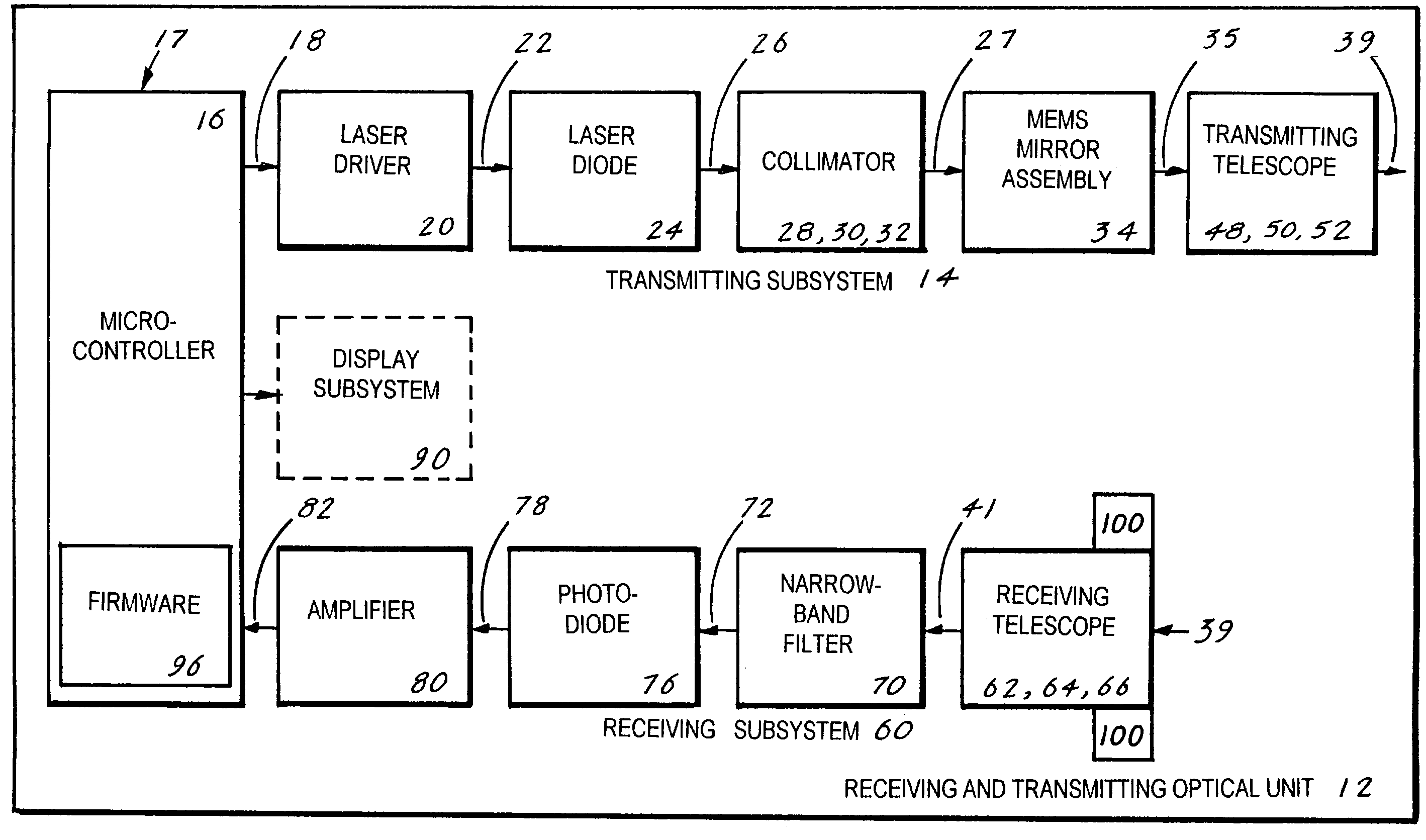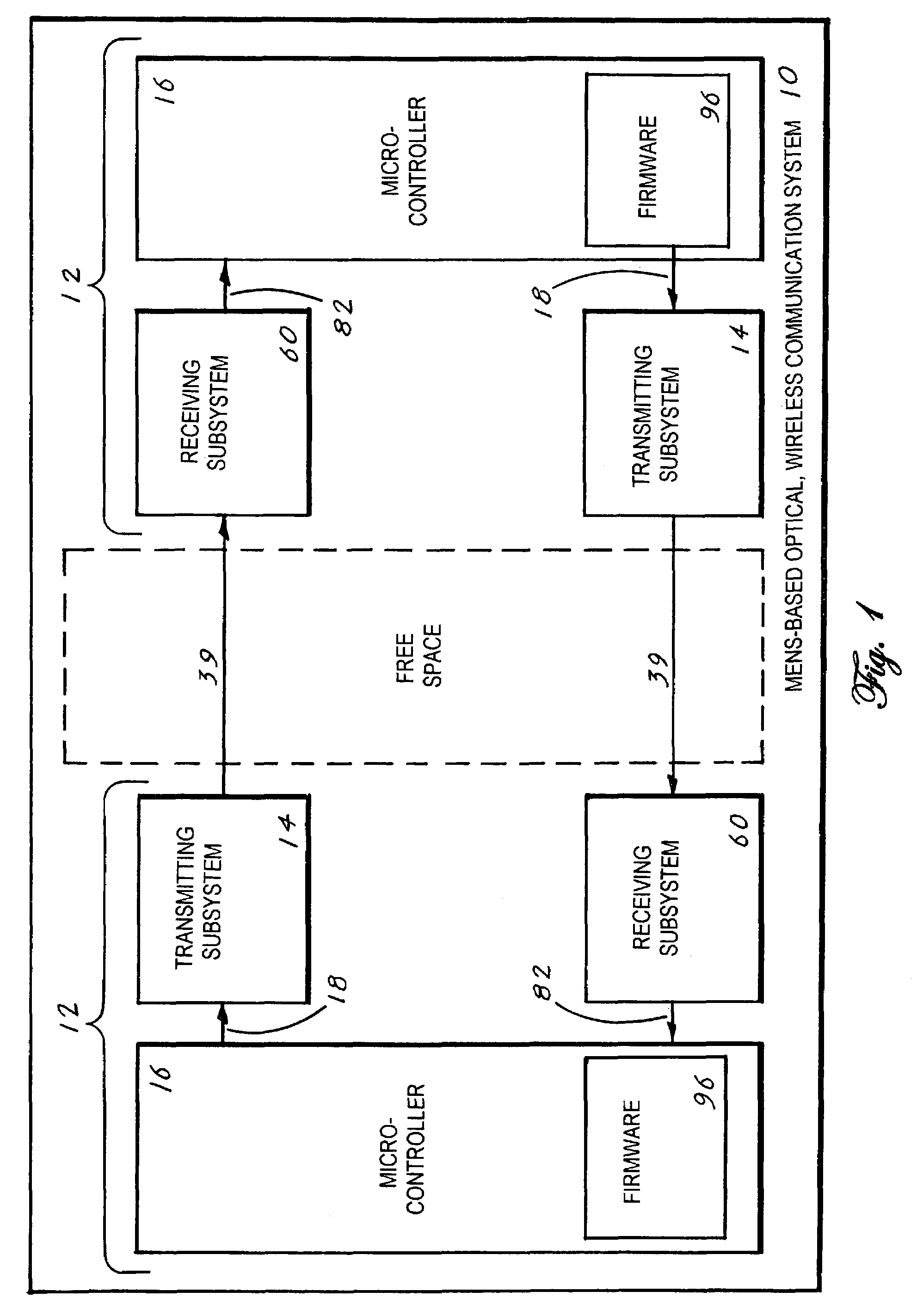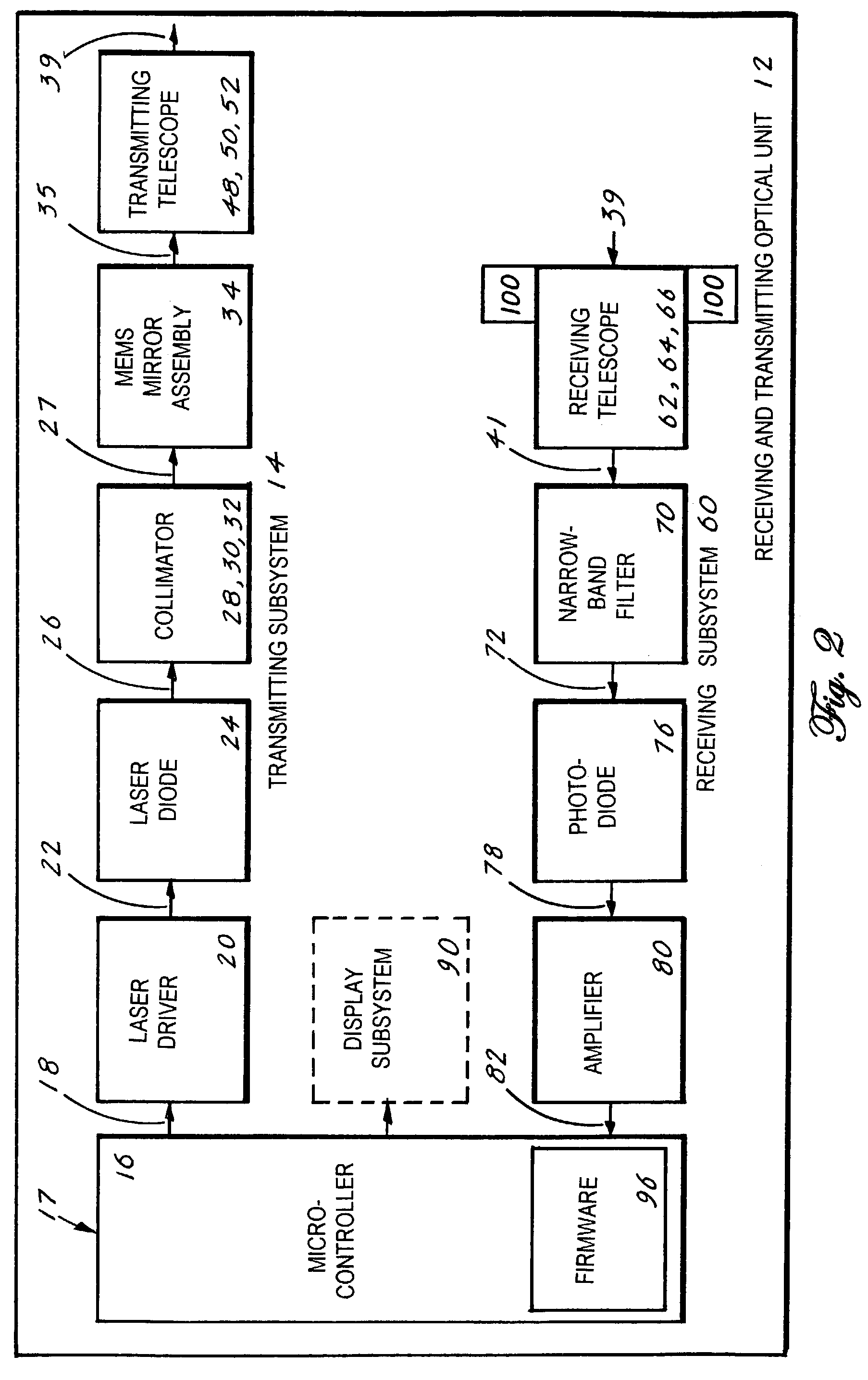MEMS-based optical wireless communication system
a wireless communication and optical wireless technology, applied in electromagnetic transmission, electrical equipment, transmission, etc., can solve the problems of limited field of view (fov) of optical receiver systems, large and cumbersome units, and high cost, and achieve effective and reliable optical communication links
- Summary
- Abstract
- Description
- Claims
- Application Information
AI Technical Summary
Benefits of technology
Problems solved by technology
Method used
Image
Examples
Embodiment Construction
[0039]The best mode for carrying out the invention is presented in terms of a preferred embodiment for a Micro Electromechanical System (MEMS)-Based, Optical, Wireless Communication System 10, (hereinafter “MBOWCS 10”). The MBOWCS 10, as shown in FIGS. 1–6, is designed to provide optical, wireless communication between two or more locations by utilizing the MBOWCS 10 in combination with data inputs provided by existing telecommunication equipment.
[0040]The MBOWCS 10, as shown in FIG. 1, consists of at least two receiving and transmitting optical units 12. Each unit 12 is comprised of a transmitting subsystem 14, a receiving subsystem 60, and a microcontroller 16 that is operated by a firmware program 96.
[0041]The transmitting subsystem 14 has means for receiving an input data signal 17 and transmitting a corresponding modulated laser beam 39 through free space. The receiving subsystem 60 has means for receiving the modulated laser beam 39 from the transmitting subsystem 14, sensing ...
PUM
 Login to View More
Login to View More Abstract
Description
Claims
Application Information
 Login to View More
Login to View More - R&D
- Intellectual Property
- Life Sciences
- Materials
- Tech Scout
- Unparalleled Data Quality
- Higher Quality Content
- 60% Fewer Hallucinations
Browse by: Latest US Patents, China's latest patents, Technical Efficacy Thesaurus, Application Domain, Technology Topic, Popular Technical Reports.
© 2025 PatSnap. All rights reserved.Legal|Privacy policy|Modern Slavery Act Transparency Statement|Sitemap|About US| Contact US: help@patsnap.com



